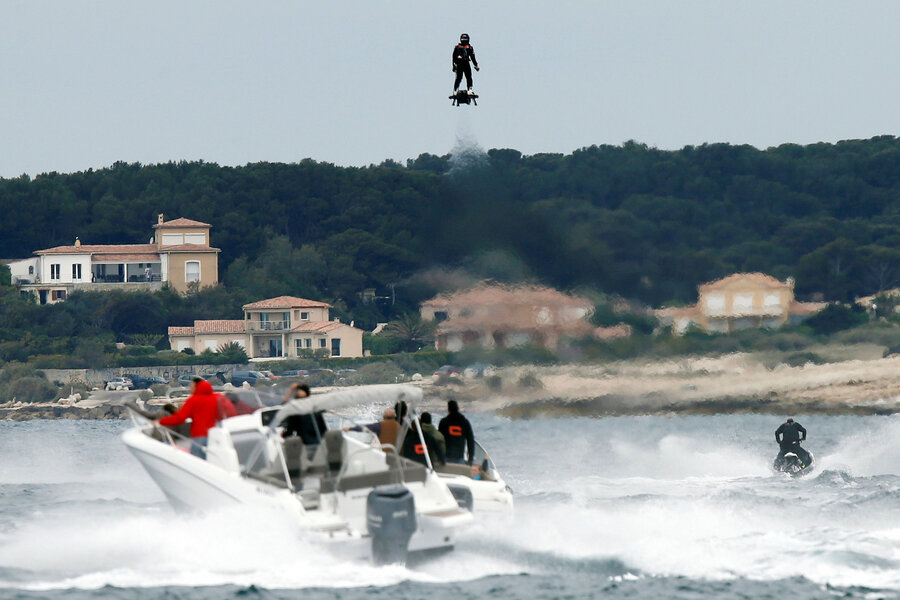'My goal is to ride the clouds,' says French hoverboard record-breaker
Loading...
A fearless Frenchman, Franky Zapata, thinks one day people will be able to ride his hoverboard to pick up bread in the morning (it's a French thing).
His vision might not be so outlandish.
The jet ski champion on Saturday set a new Guinness World Record for the farthest hoverboard flight – yes, just like in the movies – off the coast of Sausset-les-Pins in the south of France. Mr. Zapata rode the 1,000 horsepower drone, standing on top of it, for 7,388 feet, or more than a mile. He hovered 165 feet above the surface of the water, "trailed by a fleet of boats and jet skis," as Guinness reports.
His feat shattered the previous hoverboard travel record of 905 feet and 2 inches, set last year by Canadian inventor Catalin Alexandru Duru.
"My goal is to ride the clouds," Zapata told The Verge last month. "Do, like, snowboarding in the powder, but I want to do it in a cloud. That's my dream, and I will do my best to realize that."
Besides jet skiing, Zapata is known for inventing the Flyboard, a hoverboard that connects to a personal watercraft turbine with a long hose that shoots water up to the vehicle, using the pressure to propel the rider up to 40 feet in the air.
Zapata holds the 2014 record for doing the most backflips, 26, by using that device. Though that record has now been broken by Liu He from China, who flipped 27 times, according to Guinness.
The hoverboard, called Air Flyboard, was developed by Zapata's company, Zapata Racing. It's fueled by kerosene and powered by four, 250-horsepower engines inside, Zapata told Verge. It is controlled by a remote, which throttles the turboengines and helps stabilize the board.
"It's extremely hard to stabilize," Zapata told Verge, "so yes it's not only my balance."
"For example, we use like the same kind of electronics like you use on a drone to stabilize," he said.
The current device is a prototype that Zapata started flying only in March. For anyone else to ride it, he said, would require a minimum of 50 or 100 hours of experience on the original Flyboard that's powered by water.
But a public version is coming, Zapata said, and might be designed for people to sit on.
"So the goal for the other one is to have something extremely small, extremely stable, and something that you can take to go and buy your bread in the morning," he told the Verge.







